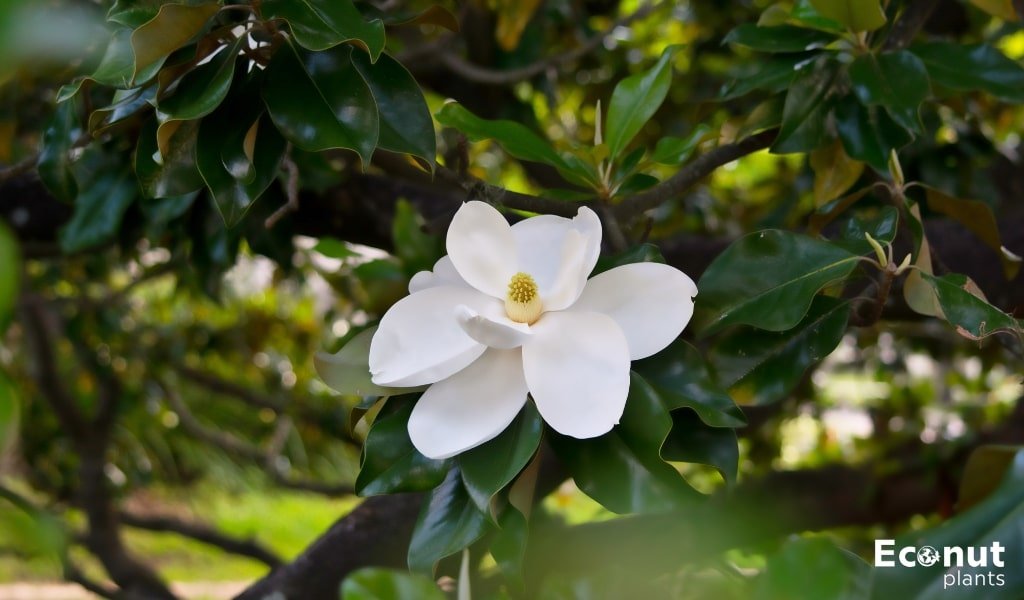The day when our gardens blossom is something most of us look forward to. Mounds of blooming perennials, moss-covered statues, towering, leafy trees, and cool, shady spots for wandering or relaxing come to mind.
For your yard or garden, are you looking for an evergreen tree that will thrive in shadow? Numerous evergreen species can flourish in shaded areas while retaining their stunning green foliage. Our top picks for shade-loving evergreens are included in this post.
1. Emerald Arborvitae
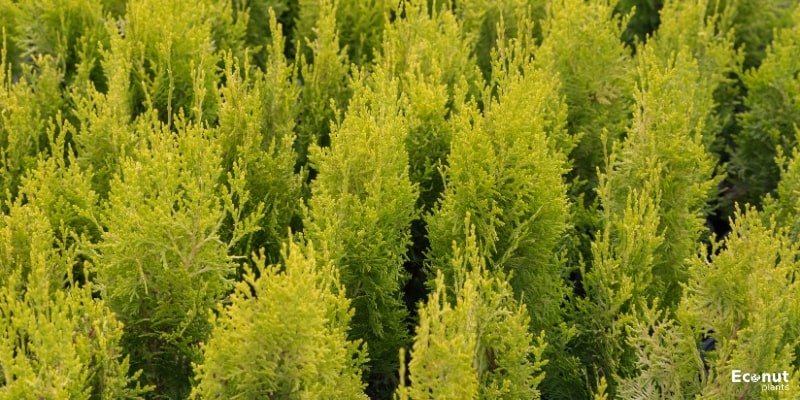
Scientific Name: Thuja occidentalis
Plant Size: 10-15 feet
Sun Exposure: Full sun to partial shade
Plant Zone: 2-8
The species of arborvitae that can tolerate some shade is the emerald arborvitae. It will thrive in a partially shaded garden, though it may not be as lush and grow as quickly as it would in full sun.
A popular option for living fences and privacy hedges is arborvitae, which can be pruned into a variety of forms and sizes. That being said, it grows wonderfully when left alone and doesn’t require pruning.
The ideal soil for emerald arborvitae is moist but well-drained to prevent sogginess. Although it can withstand a range of soil conditions, it prefers loamy soil with a pH range of 6 to 8.
2. Serbian Spruce
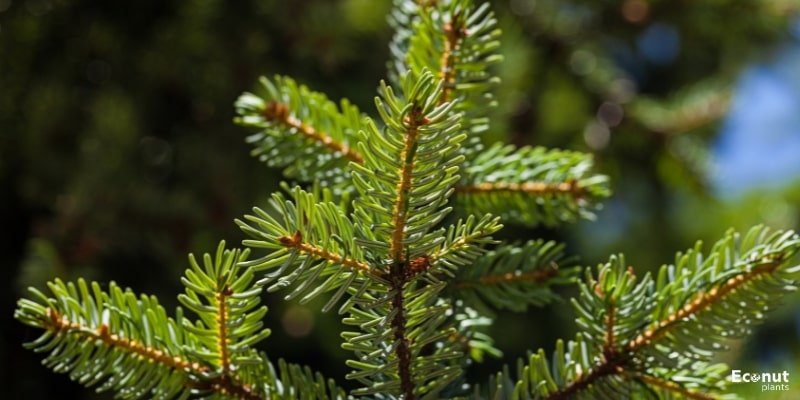
Scientific Name: Picea omorika
Geographic Origin: Southeastern Europe
Plant Size: 60-70 feet
Sun Exposure: Tolerates light to moderate shade
Plant Zone: 4-7
The Serbian spruce is a lovely tree with gracefully drooping limbs that is narrower than most other spruces. Its green needles have white streaks underneath, which give it a glittering, sunset-backlit look akin to snow.
It prefers regular, sufficient moisture and as much sun as it can get, just like most spruces. Unlike many native spruces, it is a smaller, resilient tree.
3. Strawberry Tree
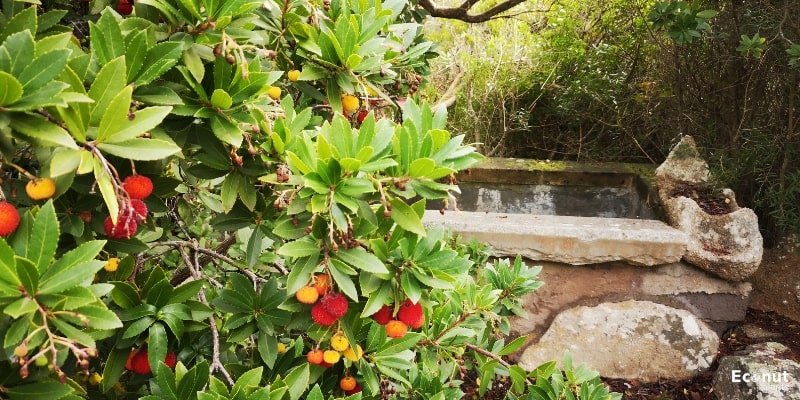
Scientific Name: Arbutus unedo
Plant Size: 15-30 feet
Sun Exposure: Full sun to partial shade
Plant Zone: 4-9
It is possible to grow the strawberry tree as a tiny tree or a shrub. Its evergreen leaves are oval-shaped and dark green. This tree produces edible reddish-orange fruits that ripen in the autumn, in addition to white to pinkish flowers that bloom from October to December.
The fruits are a major source of nutrition for birds and other wildlife, and they are frequently used to create wines, liqueurs, and preserves.
Whether planted in full sun or in partial shade, strawberry trees grow slowly. It prefers acidic clay soil with good drainage. They are tolerant of some wind and dryness once they are established.
4. Boxwood
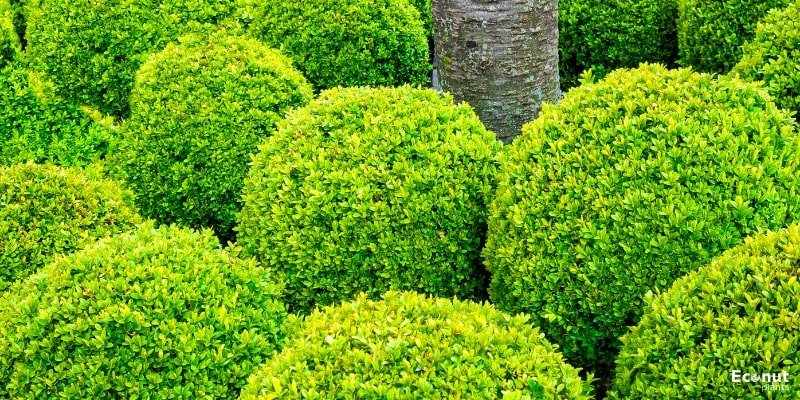
Scientific Name: Buxus sempervirens
Plant Size: 15 to 20 feet
Sun Exposure: full sun to partial shade
Plant Zone: 5-8
Boxwood, so named because of its four-sided branches, is an evergreen that grows rather quickly and does well in some shade. Although boxwoods can be trained to develop into trees, they are more frequently grown as evergreen shrubs or hedge plants.
Boxwoods have traditionally been used for topiaries and curved hedges in formal gardens because they can tolerate intensive trimming. Boxwood is prone to disease when planted in shade, although this can be reduced by thinning off overgrowth to increase air and light circulation within the plant.
5. Golden Irish Yew

Scientific Name: Taxus baccata
Plant Size: 25 feet
Sun Exposure: Shade to full sun
Plant Zone: 6
Golden Irish yew, sometimes called “common yew,” has beautiful variegated needles that change to chartreuse in the autumn and winter. It has red berries as well. It is a low-lying, slender tree that is frequently only two feet above the ground.
This year is no exception to the rule that they love the shade. It dislikes hot, dry places with direct afternoon sunlight, even though it can be planted in full sun. Additionally, it is intolerant of standing water and thrives in ordinary to moist soil, with little regard to the pH or kind of soil.
Common yew parts are harmful to people and animals, so if you plant one in a place where kids or pets often hang out, you should be careful.
6. Longstalk Holly

Scientific Name: Ilex pedunculosa
Plant Size: 20 feet
Sun Exposure: part shade to full sun
Plant Zone: Through Zone 5
The long stalk holly can grow in somewhat shaded gardens, though it does prefer some light. Once grown, it can withstand droughts but prefers damp soils. Pruning is best done late in the winter, as Holly is quite tolerant of it.
The hardy evergreen stalk holly has beautiful, spineless leaves. It first yields little, fragrant blossoms before turning into crimson berries.
Approximately 200 feet is the minimum distance for both male and female holly plants to reach fruition. Even though the berries are somewhat harmful to humans, birds are drawn to the plant’s blossoms, which also draw bees.
7. Shore Pine
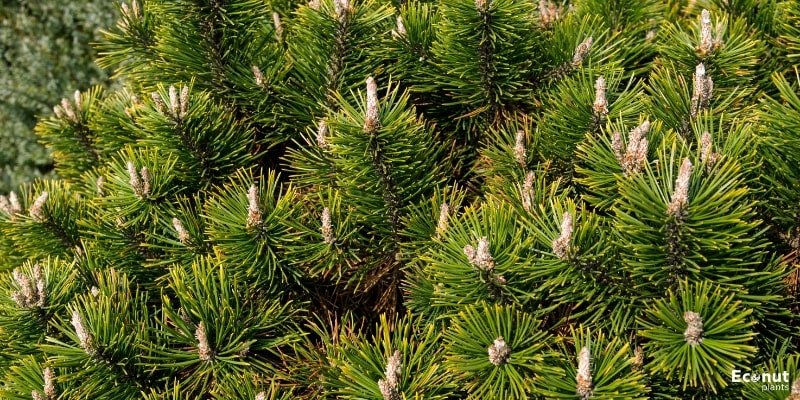
Scientific Name: Pinus contorta
Plant Size: 50 feet
Sun Exposure: Full sun to partial shade
Plant Zone: 6-8
The shore pine, commonly called the lodgepole pine, is a small to medium-sized pine tree with leaves and bark that have a deeper hue. In comparison to many related species, its needles are shorter. The tree has an uneven and sprawling shape, rarely reaching its maximum height in a straight line.
Although deer tend to avoid coast pines, birds love the little pine nuts that the tree produces. Compared to other pines, it does not tolerate pruning well, yet it produces some of the nicest unpruned hedges. Planting shore pines in groves or rows generally looks better than planting them alone.
Compared to many other pines, shore pines are more tolerant of soil moisture and can grow in both full and partial shade.
8. Wheel Tree
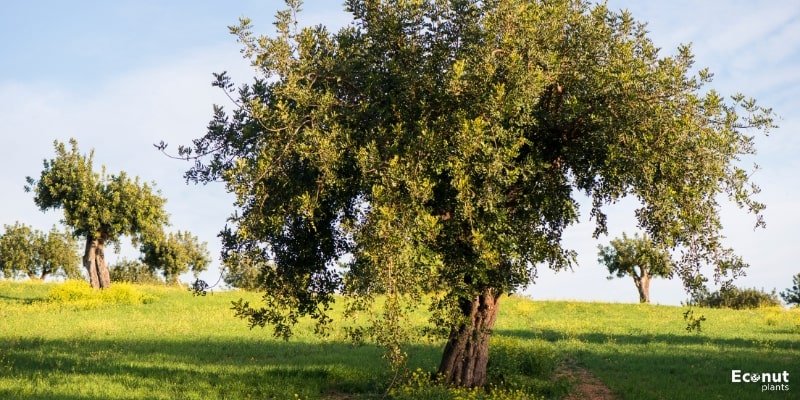
Scientific Name: Trochodendron acaricides
Plant Size: 10-20 feet
Sun Exposure: Full sun to dappled shade
Plant Zone: 6-7
The wheel tree, which can be grown as a shrub or a tree, is the only species left in its genus. Its shiny, leathery leaves form whorls around a bud, resembling an umbrella.
It bears star-shaped clusters of greenish-white blooms in the spring. The tree gets its name from the stamens of its blossoms, which stretch out like a wheel’s spokes. Wheel trees need dappled shade and may grow in a range of soil types. It cannot withstand drought and requires soil that is both moist and well-drained.
9. American Holly
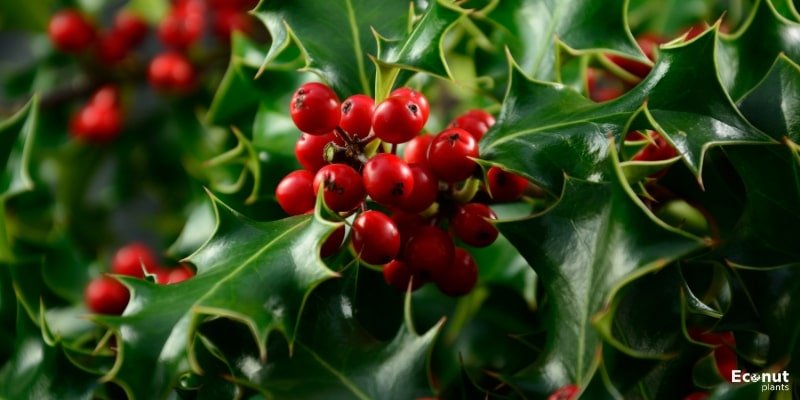
Scientific Name: Ilex opaca
Plant Size: 25-60 feet
Sun Exposure: Shade, partial shade, sun
Plant Zone: 5-9
The female plants of American holly commonly referred to as Christmas holly, bear brilliant red berries, while the leaves are prickly and dark green. It may grow into a small, multi-trunked tree with light grey bark in areas with limited sunlight.
If you intend to grow holly in your garden, be mindful that youngsters may have access to the berries, even though they are poisonous to people if consumed. The berries are an attraction for many birds and mammals. The American holly grows its thick branches slowly.
The plant loves well-drained, slightly acidic soil that has a lot of organic matter in it. Honey bees find Holly to be helpful as well.
10. Colorado blue spruce
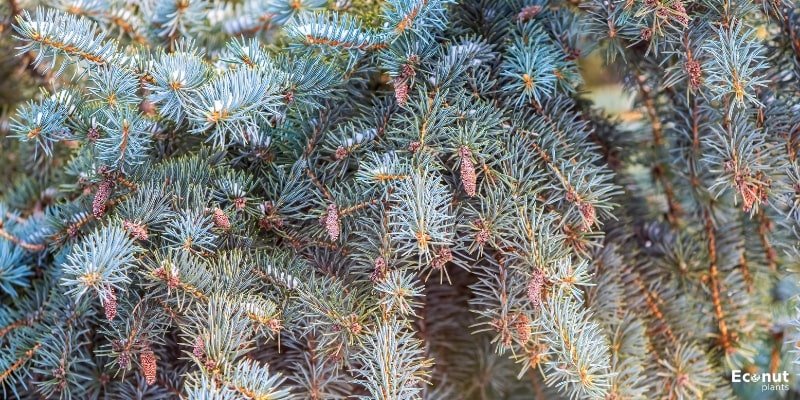
Scientific Name: Picea pungens
Plant Size: 115 feet
Sun Exposure: Sun to moderate shade
Plant Zone: 2-8
The Colorado blue spruce can grant your wish to plant Christmas trees in your shade garden. In shaded conditions, it can develop into a large tree, but it won’t reach its full height or diameter. It grows slowly, so you shouldn’t be concerned about it taking over your garden very soon.
The Colorado blue spruce has silvery-blue needles and the characteristic pyramidal shape of Christmas trees. Because of its striking colour and shape, it is a popular ornamental tree that is frequently used in windbreaks or little stands.
11. Eastern Red Cedar

Scientific Name: Juniperus virginiana
Plant Size: 80 feet
Sun Exposure: Full sun to partial shade
Plant Zone: 2-9
The red cedar found in the east is not a cedar. It is connected to the Juniper family. It spreads easily along fence lines, on deserted land, and in unmoved meadows. Its threat to the grassland has been observed in states like Kansas and Oklahoma.
Nonetheless, the eastern red cedar is resilient to almost all environmental stresses, including heat, cold, drought, wind, various soil types, and light levels up to complete shade. Comparatively speaking, it can withstand shadows far better than most junipers. For birds and other species, it serves as a vital source of food and refuge.
The leaves of eastern red cedars resemble scales and are sticky and aromatic to the touch. Its hue ranges from grey to blue-green to dark green, and in the winter it turns more bronze in tone. The male trees have brown cones that spread pollen on the tops of their branches, while the female trees bear whitish-blue fruit.
12. Hemlock

Scientific Name: Tsuga
Plant Size:100 feet
Sun Exposure: full to partial shade
Plant Zone: 3-8
Hemlock can grow suppressed in an understory for 400 years and is regarded as the most shade-tolerant tree. Hemlocks prefer soil that is both wet and well-drained. Hemlocks can take 250 to 300 years to achieve maturity and can live for 800 years. They grow slowly, especially in shade. 988 years old is the oldest hemlock tree ever documented.
Because of the high tannin content of its bark, hemlock has historically been valuable. The word “tanning,” which was originally used to treat and preserve animal skins, comes from the word “tannins.” It is renowned for imparting a deep reddish-brown hue to the leather.
Hemlock is a favourite food of many songbirds and owl species, so planting these shade-loving trees may draw birds to your yard, depending on the birds in your area.
13. Japanese Yew

Scientific Name: Taxus cuspidata
Plant Size: 20 to 50 feet
Sun Exposure: partial to deep shade
Plant Zone: 4-7
Japanese Yews are not as harsh or scratchy as many other conifers, with dark green needles that have rounded tips. Berries of vivid red colour are produced by female plants.
Although plants do need some sunlight in the spring, yews can tolerate moderate to deep shadows fairly well. They create good formal or natural hedges and are frequently planted as foundation plants on the east or north face of homes. In rock gardens, one can often find numerous tiny types.
Yews need rich soil, lots of rain, and protection from wind. They prefer not to compete with other trees with shallow roots. They might need to be pruned more while growing in deeper shade to make up for their more open growth style.
14. Southern Magnolia
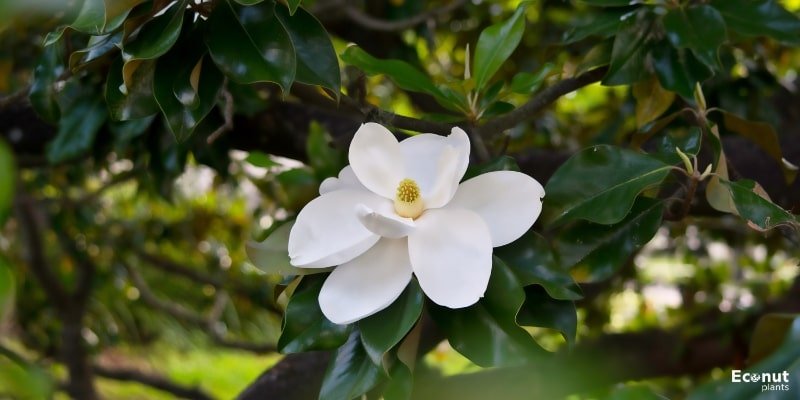
Scientific Name: Magnolia grandiflora
Plant Size: 60 to 80 feet
Sun Exposure: part shade to full sun
Plant Zone: 1-9
The fragrant, creamy-white blossoms are produced by the evergreen magnolia tree. The diameter of their flowers can reach up to 8 inches. From late spring until autumn, they bloom. The evergreen leaves have a coppery or brown underside and a glossy, dark green top.
The tree is long-lived but grows swiftly. Many birds, including woodpeckers, doves, quail, and small animals, depend on it for food and refuge. Although they can grow in a range of soil types—from sandy to heavy clay, acidic to neutral—magnolias struggle under conditions of severe dryness or excessive precipitation.
15. White Spruce
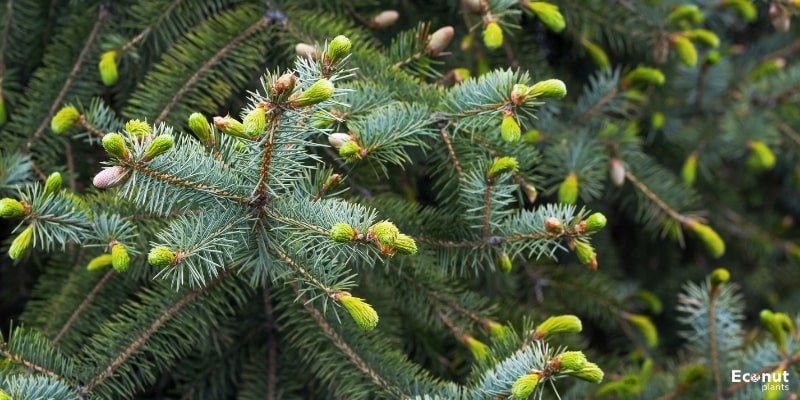
Scientific Name: Picea glauca
Plant Size: 140 feet
Sun Exposure: Partial shade to full sun
Plant Zone: 2-6
White spruce is a fantastic option if deer predation is a worry in your garden. Deer dislike the foul fragrance that is released when the needles are crushed.
White spruces have a truer green colour and do not have a more asymmetrical shape than a standard Christmas tree. They are frequently found close to streams and other sources of precipitation and prefer acidic, well-drained soil.
16. Deodar Cedar

Scientific Name: Cedrus deodara
Plant Size: 40-70 feet
Sun Exposure: Full sun to partial shade
Plant Zone: 7-9
Deodar cedars are low-maintenance trees; pruning is only required in cases where a limb has perished, become infected, or sustained damage. Of all the cedar kinds, it possesses the strongest endurance to heat and humidity.
The branches droop gently, and their whorls of 1 to 2-inch-long bluish-green or grayish-green needles are formed. While new seedlings need a lot of water, mature deodar cedars can withstand droughts fairly well. When it comes to soil type, deodar cedars don’t care as long as it drains well.
17. Giant Arborvitae
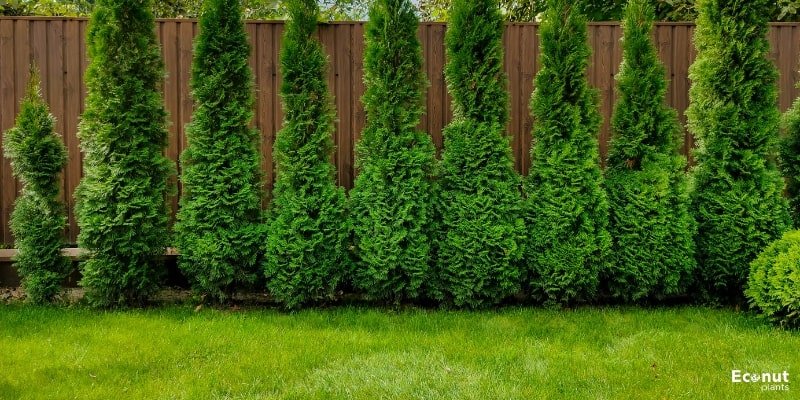
Scientific Name: Thuja plicata
Plant Size: 50 to 60 feet
Sun Exposure: Partial shade to full sun
Plant Zone: 5-9
The giant arborvitae tree is among the arborvitae types that prefer shade. This evergreen boasts minuscule, densely clustered leaves resembling scales that change colour from shiny green in the spring and summer to bronze in the winter. With no need for pruning, these trees develop swiftly and keep their shape.
The tough, tolerant giant arborvitae plant can survive a variety of soil conditions, insects, wind, drought, and disease. If given the right conditions, they have a 40-year lifespan.
You can choose trees that love the shade
It shouldn’t be difficult to choose the ideal shade-tolerant evergreen tree. There are lots of possibilities available, and the majority of the trees on this list may be planted in a range of sun and shadow circumstances. Should you wish to keep them somewhat smaller, many of them can also be used as shrubs.
All in all, your garden ought to look great with any of these well-liked choices. For optimal results, make sure you double-check your hardiness zone and give it lots of care!

